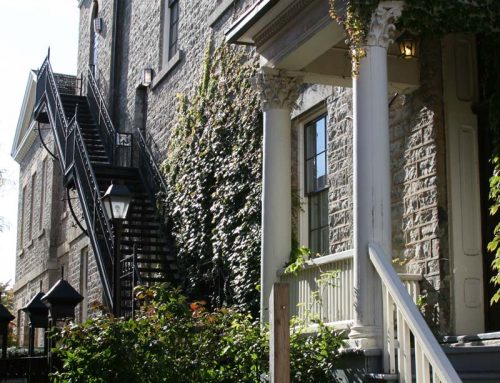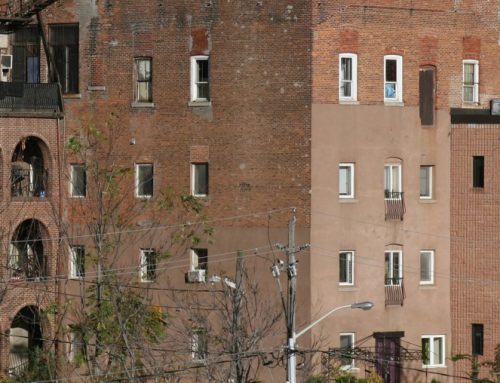Homelessness: Being homeless means one does not have a usual and safe place to call home and to return to at the end of the day. Homelessness could involve sleeping on the street, in a shelter or on a couch in another’s home.
Table 5.4 OMBI reports 2006-2010 re social housing and shelters in Niagara
| Social and emergency housing -Niagara | 2007 | 2009 | 2010 | Trends as of 2009 |
| Number of social housing units available per 100,000 population | 4344 Ont. | 43 44 Ont. | 43 44 Ont. | Similar to provincial median and slightly aboveWaterloo. |
| Available emergency shelter beds per 100,000 population | 3333 Ont. | 3533 Ont. | 3534 Ont. | Similar to provincial median andWaterloo. |
| Demand for beds – average night occupancy rate for emergency beds | 85.2%78% Ont. | 79.8%84% Ont. | 73.1%83% Ont. | Slightly above provincial average andWaterloo. |
| Percentage of waiting list for social housing housed annually | 27% 22% Ont. | 20% 20% Ont. | 18% 20% Ont. | Percentage went down 2007 to 2009. Slightly below province in 2009 and way belowWaterloo(29%) |
| What it costs per social housing unit | 4,911 | Below the province at 5,053 and above Waterloo at 4,207 | ||
| Length of stay per admission to emergency shelter | 9.6 nts9.7 nts Ont. | 11.2 nts10.5 nts Ont. | 10.2 nts 11.9 nts.Ont. | Below provincial average andWaterloo(12.8 in 2009) |
Additional community shelters are provided by Out of the Cold and Community Services contracts with agencies for shelter and hostel placements with Matthew House, Casa El Notre and YWCA.
Table 5.5 Housing Incidences Addressed by Niagara Community and Social Services Staff, 2007 & 2010
| Housing Incidences Addressed | # families reported 2007 | # families reported 2010 |
| Families experiencing homelessness |
1291 |
590 |
| Families living in temporary accommodation |
687 |
181 |
| Families living on the street |
610 |
278 |
| Families facing imminent risk or risk of homelessness |
505 |
1344 |
| Families relocating from the street to temporary accommodation |
167 |
181 |
| Families relocating from temporary to permanent housing |
77 |
219 |
Source: Survey conducted by Ontario Non-Profit Housing Association (ONPHA)
Source: Niagara Regional Housing, Homelessness and Hostels Data
Special target groups and housing needs and initiatives:
Youth homelessness and housing initiatives:
- Two shelters are dedicated to youth in all of Niagara – the RAFT (Resource Association for Teens) and Nightlight, along with some transitional apartments that are dedicated to youth.
- In 2007, Niagara started a systems approach to addressing youth homelessness. Youth in any community, rural or urban has access to youth specific services. Transitional housing and Youth Without Secure Housing initiatives have had a positive change impact. There is some evidence that the plan of action is beginning to work, and youth homelessness is trending downward. Niagara is experiencing an impact of a drop in youth shelter usage.
- Some of the funding has changed and while the planning is still there, it is not sustainable and requires dedicated resources to sustain the gains made.
Seniors and other groups in need of housing:
- Continued and innovative strategies to assist special populations with shelter and housing are required (seniors, low-income, supportive housing, those at high risk of homelessness, and those paying over 30-40% of income on shelter).
- 2 -parent families are faring better than lone-parents, singles and seniors in accessing shelter and housing.
- There are increased numbers of seniors on waiting lists for social and subsidized housing.
- There is increased demand for supported housing arrangements for seniors and those with disabilities and mental health issues (not requiring 24 hour supervision). The introduction of the March of Dimes Wellness Supportive Living Program is an example of emerging activity to meet the demand.
Women, Homelessness and Poverty:
Special Priority Housing Status* (for victims of family violence fleeing abuse) has significant restrictions, making it difficult for abused women to qualify. If an abused woman does not qualify, then the wait time becomes difficult to manage as evidenced by the numbers of families on the wait list. This forces some women into paying market rent, which in many cases is unaffordable. The lack of safe, adequate, affordable housing, especially in rural areas of Niagara, makes it very difficult for abused women to find and keep affordable housing. This is especially true for women with larger families. The lack of housing is having an impact on women’s shelters, as women need to stay longer in shelter to wait for appropriate affordable housing to become available. This clearly demonstrates the importance of focusing on assisting abused women and their children to find affordable housing in a timely manner.
*Special priority housing status means that victims of domestic violence will be afforded the opportunity to be housed quickly.
| Abused women and their children in Niagara – 2009, 2010 | ||||
| Date | Households on Waiting list | Total Waiting List | Households housed | Households that were classified as Special Priority Housing Status |
| December 31,2009 | 74 | 4611 | 723 | 151 |
| December 31, 2010 | 64 | 5543 | 668 | 174 |
Source: Coalition to End Violence Against Women (CEVAW), 2011: http://www.cevaw.com/
Social housing – number of units and supply of beds available: The Ontario Municipal Benchmarking Initiative (OMBI, 2009) calculated the number of social housing units available in Niagara as 40 from 2007-2009 (slightly below the provincial number of 44).













